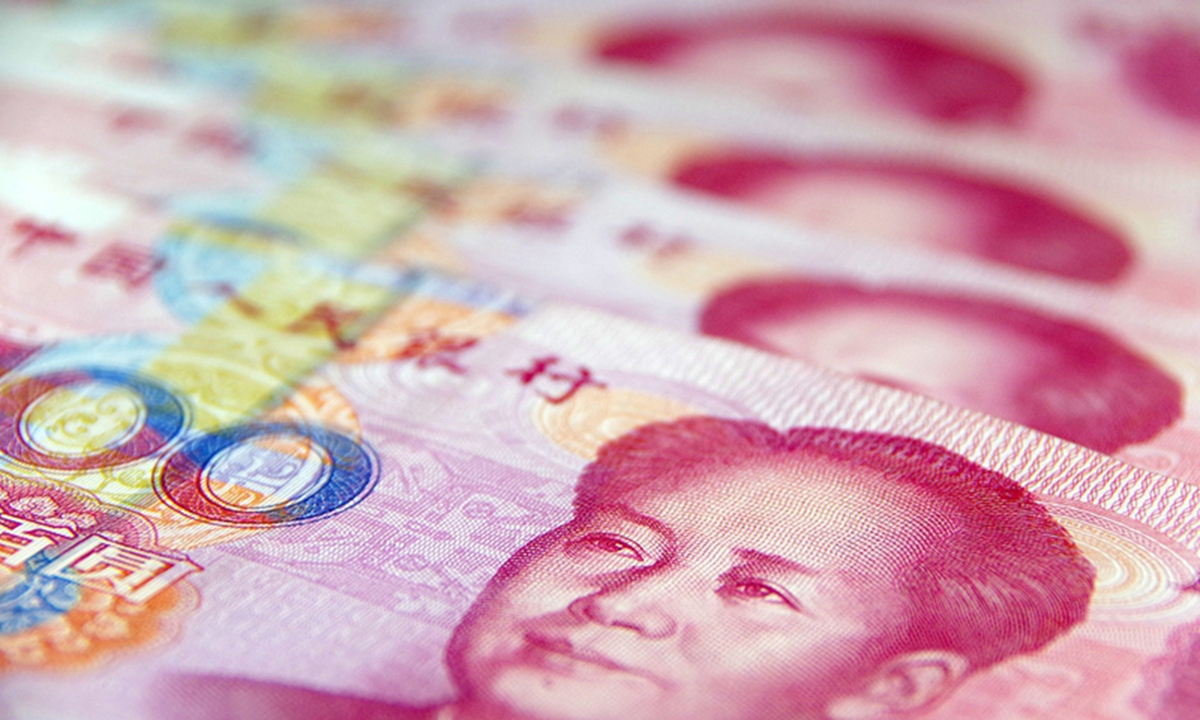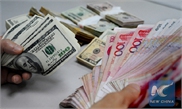
Chinese yuan Photo:VCG
Offshore yuan strengthened more than 100 points to 7.017 against the US dollar on Friday after the China Foreign Exchange Committee (CFXC) vowed to resolutely curb major fluctuations in the exchange rate and stressed that the yuan can be kept basically stable at a reasonable equilibrium level.
CFXC held a meeting on Friday, which stressed that the People's Bank of China (PBC) and the State Administration of Foreign Exchange will strengthen supervision over the forex market, guide expectations and curb speculation, after the yuan saw significant fluctuations both ways against the US dollar.
The meeting pointed out that the stable operation of China's macro-economy, foreign exchange reserves and overall stable market expectations provide solid foundation and strong guarantee for the steady operation of the foreign exchange market.
Despite the recent fall of the yuan past 7 to the US dollar, experts predict that the depreciation trend is phased and that the yuan's exchange rate will remain resilient, fluctuating within a reasonable range. Favorable conditions including the improved Chinese economy and a possible end to US interest rate hikes will further support the exchange rate, they said.
China's central bank on Friday set the official midpoint reference for the yuan at 7.0356 per dollar. Friday's rate was also the weakest level since December 5, 2022.
This comes after both the onshore and offshore yuan weakened beyond 7 per US dollar on Wednesday for the first time in five months.
Experts pointed out there is no need to exaggerate the sentiment, and a breach of the key "seven" benchmark does not imply a continuation of a sharp depreciation of the yuan, adding that the recent fluctuation will not undermine market confidence in the yuan as some foreign media claim.
The yuan has breached the symbolic "seven" benchmark against the dollar several times before and bounced back. It is fair to say that the yuan's exchange rate has become significantly more flexible after going through multiple challenges presented across complex internal and external environments, Zhou Maohua, an economist at Everbright Bank, told the Global Times on Friday.
Darius Tang, Associate Director of Corporates from Fitch Bohua, also told the Global Times on Friday that the logic of two-way fluctuations of the yuan-dollar exchange rate remains tenable.
A China financial stability report issued by the PBC on Friday also pointed out that the favorable fundamentals of the Chinese economy, the factors supporting China's high-quality development as well as its resilience remain unchanged.
Prudent monetary policy should be in place to increase support for the real economy, give greater priority to stabilizing growth, better leverage the combined functions of monetary policy tools and structure, and enhance the stability of total credit growth, according to the report.
The yuan is expected to experience two-way fluctuations at a reasonable and balanced level boosted by a number of domestic and external factors, analysts said.
China's economy is demonstrating a trend of steady growth, recovering further in April fueled by surging consumption and rising industrial output.
China's retail sales, a main gauge of the sector, jumped by 18.4 percent in April, rising sharply from a 10.6 percent increase in March for the fastest gain since March 2021. The industrial added value of major industrial enterprises in China also rose by 5.6 percent, accelerating from 3.9 percent in March.
Externally, as the US Federal Reserve and other overseas central banks are expected to gradually reach the end of a period of interest rate hikes, coupled with weakening overseas fundamentals, the external pressure on the yuan's exchange rate has weakened, Zhou said.
Some US officials have stressed the need to pause rate hikes for an extended period due to concerns over the Fed continuing to make borrowing costs more expensive, adding that it could trigger a deep recession.

